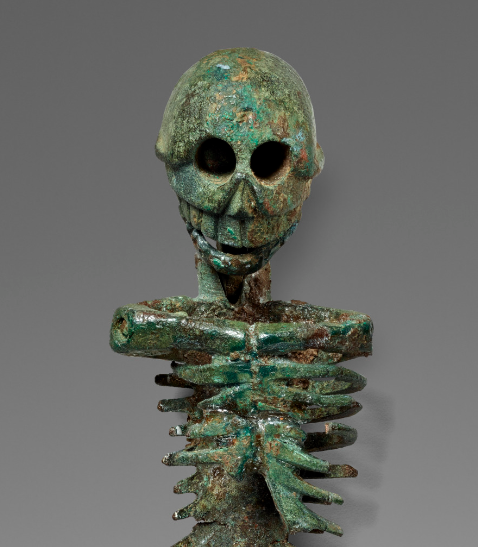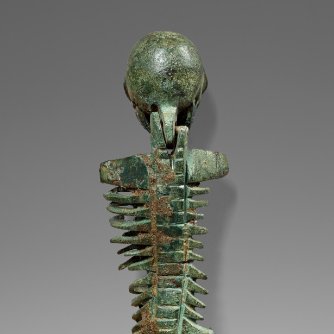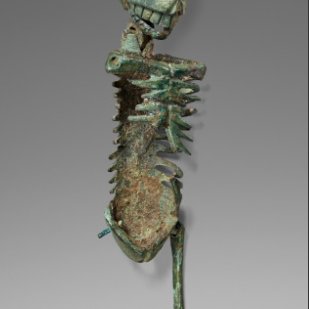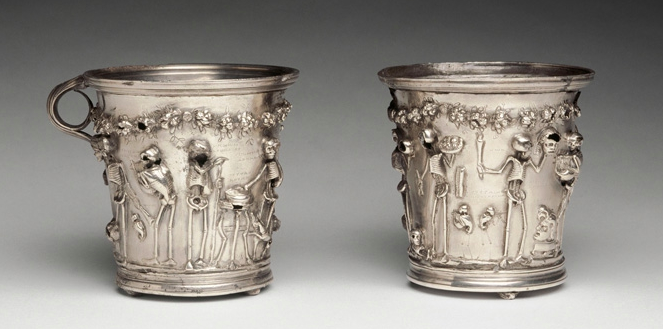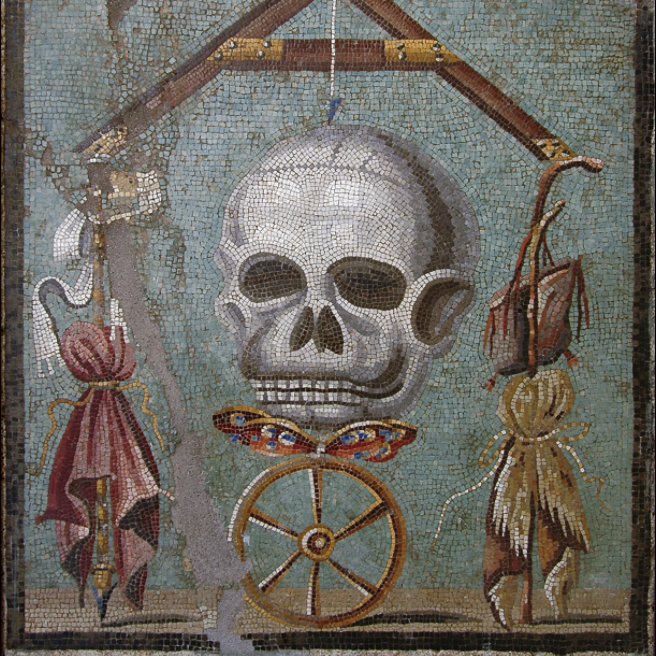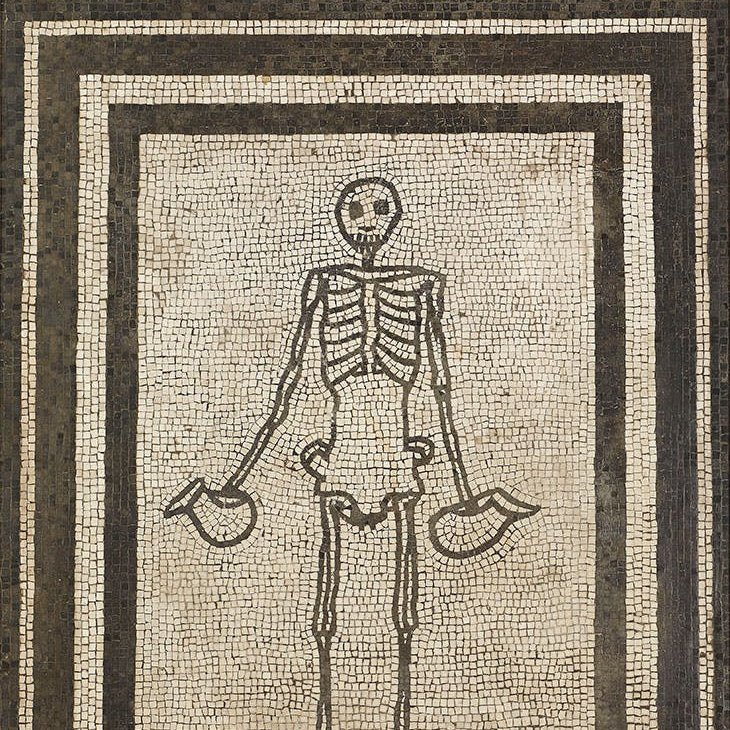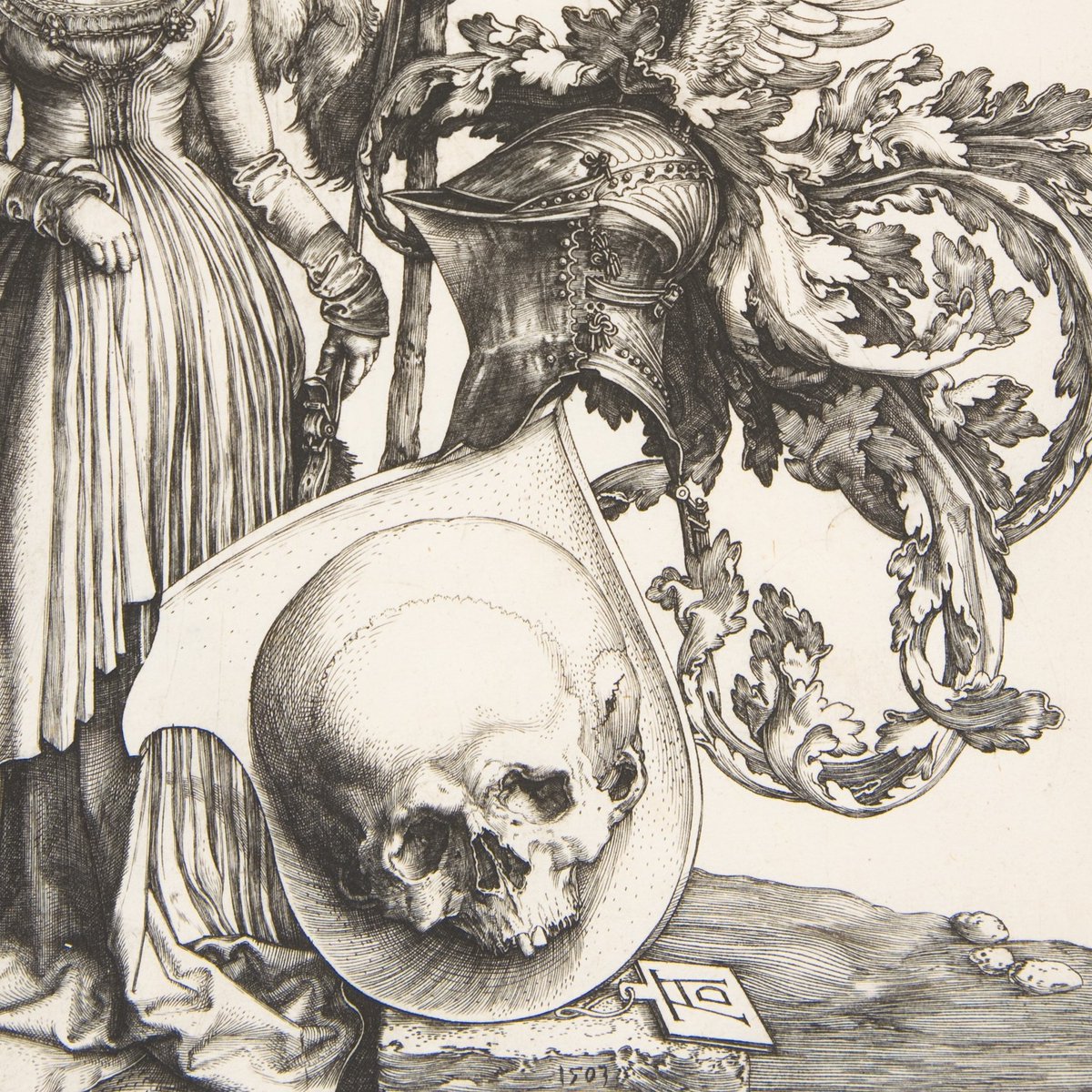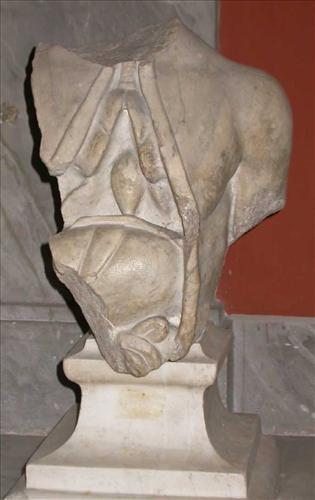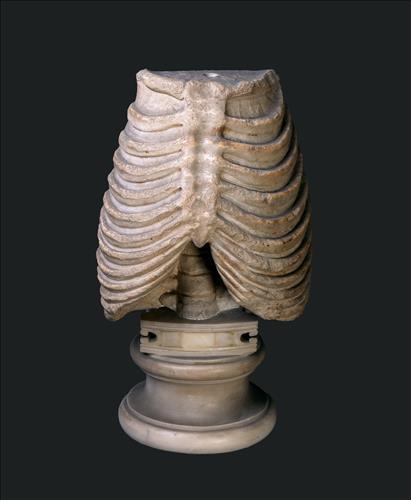today& #39;s #fragmentfind is a miniature ancient Roman articulated bronze skeleton from the 1st cent BC or AD.
Although it initially seems morbid, this guy served as a & #39;momento mori& #39; - a reminder that because life is fleeting, it should be enjoyed!
Getty Inv. 78.AB.307
Although it initially seems morbid, this guy served as a & #39;momento mori& #39; - a reminder that because life is fleeting, it should be enjoyed!
Getty Inv. 78.AB.307
Petronius gives us an account of a metal skeleton being used in this way at a dinner party in his Satyricon
pt 1:
"As we drank and admired each luxury in detail, a slave brought in a silver skeleton, made so that its limbs and spine could be moved and bent in every direction."
pt 1:
"As we drank and admired each luxury in detail, a slave brought in a silver skeleton, made so that its limbs and spine could be moved and bent in every direction."
pt 2:
"He put it down once ...on the table so that the supple joints showed several attitudes, and Trimalchio said... “Alas for us poor mortals, all that poor man is is nothing. So we shall all be, after the world below takes us away. Let us live then while it goes well with us.”
"He put it down once ...on the table so that the supple joints showed several attitudes, and Trimalchio said... “Alas for us poor mortals, all that poor man is is nothing. So we shall all be, after the world below takes us away. Let us live then while it goes well with us.”
this is not the only instance of festive skeletons at the Roman dinner party. These remarkable silver cups from the Boscoreale treasure (now Louvre Bj 1923 and Bj 1924) ft the skeletons of famous poets and Greek philosophers (all labeled and having a great time!)
the same theme was famously used in mosaics from houses in Pompeii, including this beautiful example in the @MANNapoli Inv. 109982
another example with a skeleton holding two wine jugs, normally housed at @MANNapoli, was recently featured in the @AshmoleanMuseum & #39;s & #39;Last Supper in Pompeii& #39; exhibition
#MuseumFromHome #rome #Pompeii #Mosaic
#MuseumFromHome #rome #Pompeii #Mosaic
The & #39;momento mori& #39; message (to live life to the fullest, because death comes for us all) continued to be a popular theme in #medieval and #Renaissance art, especially in Germany and the Netherlands, as seen in the work of masters like Albrecht Dürer ( @metmuseum inv 19.73.113)
because of the enduring popularity of & #39;momento mori& #39; imagery. it is sometimes hard to say whether these skeletal artworks are ancient or early modern! That is the case for two works in the Vatican Museums, a stone rib cage (Inv. 597) and an anatomical model (Inv. 599).
In the case of no. 599, although the marble and technique seem more suited to a post-Renaissance anatomical model than a Roman work, some consider it an ancient votive from the villa of Antonius Musa, the doctor of #Augustus, used to teach #anatomy of the chest and abdomen. Gory!
@jmss and @ExploreWellcome me what do you think?
thanks to skelly king @diffendale for help with the Vatican numbers!
For more info on healthcare in ancient #Greece and #Rome, I really recommend @FlintDibble& #39;s excellent recent thread on the topic!
thanks to skelly king @diffendale for help with the Vatican numbers!
For more info on healthcare in ancient #Greece and #Rome, I really recommend @FlintDibble& #39;s excellent recent thread on the topic!

 Read on Twitter
Read on Twitter